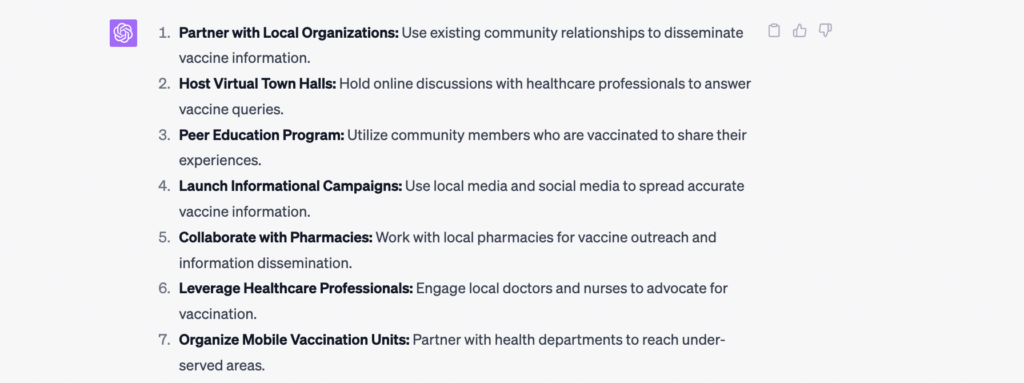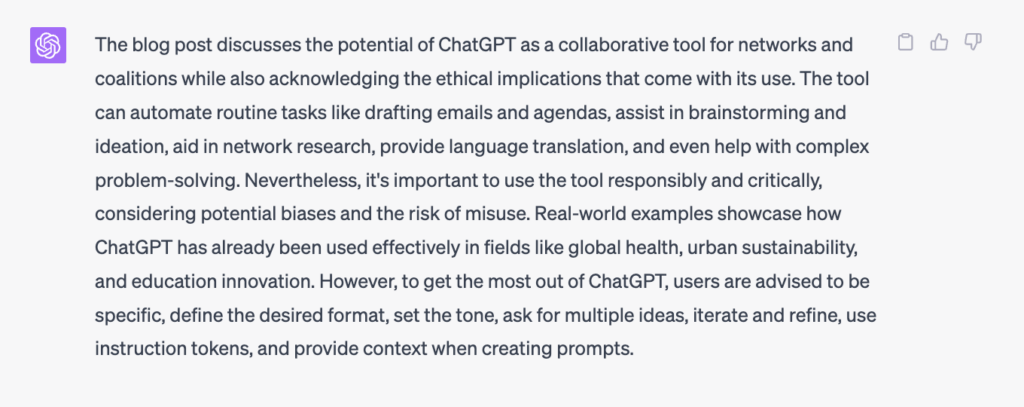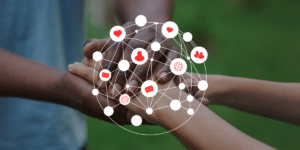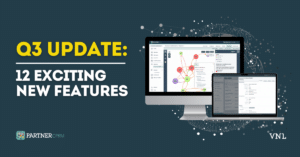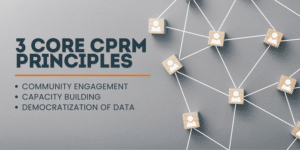In the digital age, artificial intelligence (AI) has become an integral part of our lives, and the world of cross-sector collaboration is no exception. From streamlining communication to aiding in data analysis, AI can help networks and coalitions work together more effectively. Today, we’ll explore how ChatGPT, a sophisticated AI developed by OpenAI, can be harnessed to boost collaboration and generate shared solutions.
But before we dive into the many benefits of using ChatGPT, it’s important to address the elephant in the room: the ethical considerations surrounding its use.
Table of Contents
ChatGPT: A Powerful Tool with Critical Ethical Implications

For instance, one key concern is the potential for the AI to perpetuate biases present in its training data. The AI learns from a vast array of online text, which, while enabling it to generate impressively human-like responses, also means it can absorb and replicate biases present in those texts. Therefore, users must approach the tool’s insights with a critical eye and a commitment to counteracting these biases where they appear.
Another issue is the potential misuse of the technology. ChatGPT can generate text that is convincingly human-like, which, in the wrong hands, could be used misleadingly or maliciously. It’s crucial to ensure that the technology is used responsibly, and users should be upfront about its use to avoid deception.
It is important to keep these concerns in mind whenever you use AI technologies to ensure you do not create unintended negative consequences. However, with the right perspective and forethought, ChatGPT can save community partners significant time and resources to streamline collaboration and improve outcomes. Here are 14 ideas and examples you can use to get started, plus some tips to craft effective prompts that can leverage ChatGPT for collaboration.
1. Drafting Emails, Proposals, and Agendas
Email communication is integral to maintaining coherence in a network. ChatGPT can be used to draft emails, from regular updates to formal letters. ChatGPT can help structure your ideas for proposals, providing persuasive narratives highlighting the social impact your network aims to achieve. When it comes to meeting agendas, ChatGPT can create clear, concise outlines that ensure time is used efficiently and all key topics related to system change are covered.
2. Brainstorming and Ideation
ChatGPT can be a useful tool for generating ideas related to social impact initiatives or system change strategies. By inputting a few keywords or a general idea, ChatGPT can generate a variety of related ideas or suggestions that your network may not have considered, fostering creativity and innovation.
For example, I asked ChatGPT to brainstorm ideas for a community health coalition to address COVID-19 vaccination inequity in their local community by taking a collaborative approach without major funding requirements. Here’s what it suggested:
3. Network Research
Networks often need to compile information on various topics. ChatGPT can assist with this, providing summaries of specific topics, key points on certain issues, or potential solutions to problems. This can be particularly helpful when researching social impact strategies or potential barriers to system change.
4. Language Translation
In globally distributed networks, language barriers can hinder collaboration. Although not its primary function, ChatGPT can provide simple translations, enabling clearer communication across language barriers and fostering inclusivity.
5. Grant Writing and Fundraising
Writing compelling grant proposals or fundraising letters can be time-consuming. ChatGPT can assist in structuring these documents, ensuring they effectively communicate the social impact of your work and the need for financial support to bring about system change.
6. Public Relations and Marketing
ChatGPT can draft press releases, social media posts, or marketing copy, ensuring your network’s achievements and impact are communicated effectively to the public. This can boost your network’s visibility and reputation, aiding in your system change efforts.
7. Complex Problem-Solving
By inputting a problem statement into ChatGPT, it can generate a variety of potential solutions or steps to address the issue. This can be particularly helpful when tackling complex social problems where traditional solutions may not be sufficient. You can also provide feedback to refine its suggestions to drill down into the unique complexities of the issue you need to address.
8. Network Strategic Planning
ChatGPT can assist in drafting strategic plans, helping to articulate your network’s goals, strategies, and steps towards social impact and system change. This can aid in maintaining coherence and direction within the network. Just share notes on your goals, threats and opportunities, strengths and weaknesses, and watch as AI creates a plan to implement.
9. Data Analysis and Visualization
While ChatGPT cannot directly perform data analysis or visualization, it can provide explanations of complex data or suggest ways to interpret it. This can be useful when discussing data-driven insights related to social impact or system change.
10. Summarizing Information and Articles
Networks often need to digest large volumes of information. ChatGPT can assist by summarizing lengthy reports, articles, or documents, providing key points and summaries that allow network members to quickly understand the content and its relevance to their social impact work.
For example: Instead of reading this entire article, you could copy and paste it into ChatGPT and ask for a summary. Here’s what it told us when we did just that:
11. Analyzing Your Partners' Feedback
ChatGPT can help in analyzing feedback from network partners, identifying common themes or key points. Copy and paste your results from network surveys, interviews, or focus groups to look for hidden insights and discoveries. This can inform your network’s strategies and ensure everyone feels heard and valued.
12. Planning Network Convenings and Events
From drafting invitations to creating event schedules, ChatGPT can assist in event planning. Well-planned and engaging events can foster collaboration, strengthen relationships, and spur innovative thinking around system change. You can even enter your list of attendees and their interests and ask Chat GPT to create a seating assignment that will spark new connections and generate unique relationships between network members.
13. Identifying New Strategic Partners
If your network is looking to build new connections of identify the key players in a community, ChatGPT can help. Provide information about your community context, goals, and a list of organizations to get immediate feedback on which might be best to prioritize for developing new relationships.
14. Personalizing Outreach
Networks often need to reach out to a variety of stakeholders, from community members to potential funders. ChatGPT can assist in personalizing these outreach messages, ensuring they are tailored to the recipient’s interests and needs. This can lead to more meaningful engagement and stronger relationships, both of which are critical for effective collaboration and system change.
ChatGPT for Collaboration: Three Examples
Looking for some real-world examples? Here are several examples of how networks are using ChatGPT for collaboration and strategy.
Example 1: Global Health Network

Example 2: Streamlining Proposal Writing in a Fundraising Coalition
The Urban Sustainability Coalition, a group of nonprofits aiming to promote green practices in urban areas, needed to write numerous grant proposals to secure funding. To save time and effort, they turned to ChatGPT to help structure their proposals, ensuring they effectively communicated the social impact of their work. The coalition also used ChatGPT to personalize their outreach messages to potential donors, leading to an increase in donations and enabling the coalition to implement more sustainable practices in their communities.
Example 3: Facilitating Ideation in an Educational Network

Tips for Creating Effective ChatGPT for Collaboration Prompts
Just like searching on Google, creating a prompt in ChatGPT is both a science and art. If you do not provide the right information when making a request, you probably won’t get the results you were looking for. Here are some quick tips for those new to ChatGPT to create highly effective prompts that save time and resources.
- Be Specific: The more detailed and specific your prompts, the better the responses align with your needs. For instance, instead of asking, “What are some marketing strategies?” you might ask, “What are some digital marketing strategies for a non-profit organization focused on environmental conservation?”
- Define the Format: If you want the output in a specific format, specify it in your prompt. For example, “Write a brief summary in bullet points on the latest research about climate change impacts.”
- Set the Tone: If you need the output in a particular tone or style, mention it in your prompt. For example, “Write a friendly and engaging invitation email for our annual fundraising event.”
- Ask for Multiple Ideas: If you are brainstorming or seeking a range of ideas, ask ChatGPT to generate several options. For instance, “List five creative ideas for our Earth Day social media campaign.”
- Iterate and Refine: Experiment with different prompts and refine based on the responses you get. AI models like ChatGPT can sometimes produce unexpected results, so don’t hesitate to tweak your prompt until you get the desired output.
- Use Instruction Tokens: Use words like “Describe,” “Explain,” “List,” “Summarize,” etc., at the beginning of your prompts to guide the kind of response you want. For example, “Describe the steps needed to organize a successful virtual conference.”
- Provide Context: If your query is part of a larger conversation or requires knowledge of prior interactions, include that context in your prompt to guide the model’s response.
Frequently Asked Questions (FAQs)
A: No, ChatGPT is a tool designed to assist and enhance human collaboration. It cannot replace the unique perspectives, empathy, or creativity that human members bring to a network. It’s best used as an aid to streamline tasks and improve efficiency.
A: While ChatGPT has been trained on diverse and multilingual datasets, it’s not perfect. Its translations are generally reliable for straightforward sentences, but it may struggle with nuanced or complex language, slang, or idioms. Always have important translations checked by a human fluent in the language.
As with any AI, data security and privacy are important considerations. Ensure you’re using ChatGPT within a secure environment and avoid inputting sensitive information into the model. Consult with your IT department or digital security advisor for guidance.
A: ChatGPT can provide data analysis, summaries, and potential perspectives to consider, but it shouldn’t be the sole decision-maker. Final strategic decisions should be made by human members of your network, taking into account the unique context and nuances of your situation.
Using ChatGPT for Collaboration: The Last Word
In conclusion, ChatGPT offers transformative potential for networks and coalitions seeking to enhance collaboration and drive social impact. Automating routine tasks, providing valuable insights, and assisting in strategic planning, can streamline processes and free up time for more meaningful engagement. However, while leveraging this powerful tool, it’s vital to navigate thoughtfully, prioritize data privacy, acknowledge the technology’s limitations, and measure its value not by its ability to replace human input but by how much it enhances human collaboration. With a blend of human brilliance and artificial intelligence, we can drive greater collective impact for our communities and the world at large.

